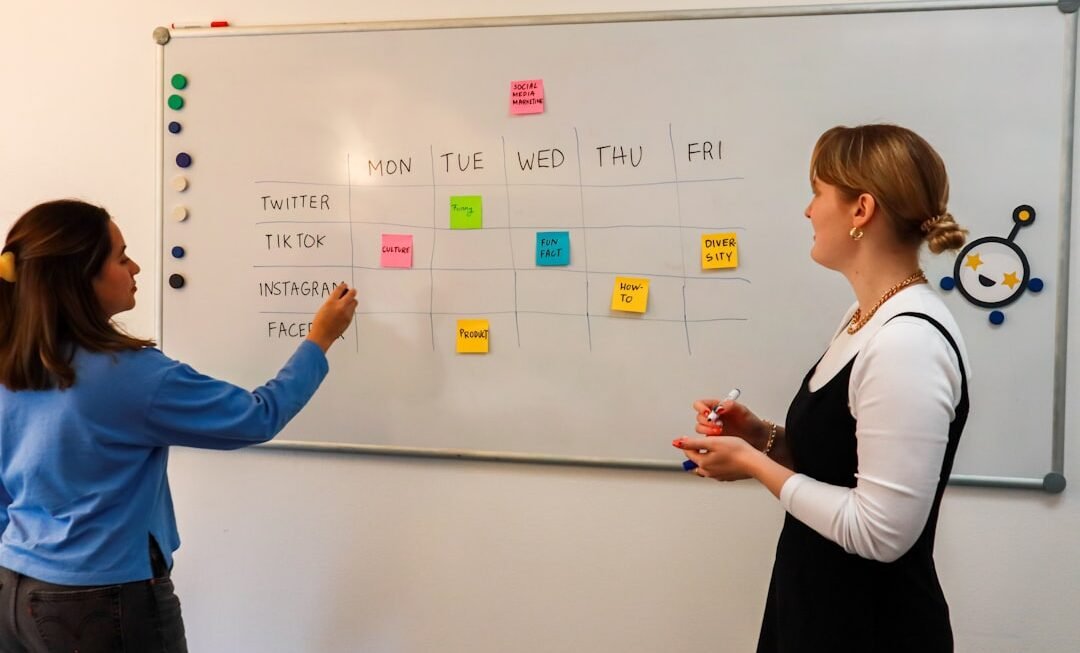The advent of the internet has revolutionized the way education is delivered and consumed, giving rise to online learning as a prominent mode of instruction. This transformation has been accelerated by technological advancements, which have made it possible for learners to access educational resources from virtually anywhere in the world. Online learning encompasses a wide range of formats, including massive open online courses (MOOCs), virtual classrooms, and self-paced learning modules.
The flexibility and accessibility of online education have attracted millions of learners, from traditional students to working professionals seeking to upskill or reskill. As the landscape of education continues to evolve, online learning is increasingly recognized for its potential to democratize access to knowledge. It breaks down geographical barriers, allowing individuals from diverse backgrounds to engage with high-quality educational content.
Moreover, the COVID-19 pandemic has further accelerated the adoption of online learning, as institutions were compelled to pivot to remote instruction. This shift has not only highlighted the importance of digital literacy but has also prompted educators and institutions to innovate and adapt their teaching methodologies to better suit an online environment.
Key Takeaways
- Online learning provides flexibility and accessibility for learners of all ages and backgrounds.
- Personalized learning experiences cater to individual needs and learning styles, enhancing engagement and retention.
- Gamification and interactive content make learning more engaging and enjoyable, leading to better knowledge retention.
- Artificial intelligence in online education enables adaptive learning, personalized feedback, and efficient content delivery.
- Virtual and augmented reality offer immersive and interactive learning experiences, enhancing understanding and retention.
Personalized Learning Experiences
One of the most significant advantages of online learning is the ability to create personalized learning experiences tailored to individual needs and preferences. Unlike traditional classroom settings, where one-size-fits-all approaches often prevail, online platforms can leverage data analytics and user feedback to customize content delivery. For instance, adaptive learning technologies can assess a learner’s strengths and weaknesses in real-time, adjusting the curriculum accordingly.
This ensures that students are neither overwhelmed by challenging material nor bored by content that is too easy. Personalized learning experiences can also extend beyond academic content. Online platforms often incorporate various multimedia resources—such as videos, podcasts, and interactive simulations—that cater to different learning styles.
A visual learner might benefit from infographics and videos, while an auditory learner may prefer lectures and discussions. By providing a diverse array of resources, online education can engage learners more effectively and foster a deeper understanding of complex subjects. Furthermore, personalized feedback from instructors can guide students on their learning journeys, helping them set achievable goals and stay motivated.
Gamification and Interactive Content
Gamification has emerged as a powerful tool in online education, transforming mundane learning tasks into engaging and interactive experiences. By incorporating game-like elements such as points, badges, leaderboards, and challenges, educators can motivate learners to participate actively in their studies. For example, platforms like Kahoot! allow instructors to create quizzes that students can answer in real-time during class sessions, turning assessments into competitive games that enhance engagement and retention. Interactive content goes hand-in-hand with gamification, providing learners with opportunities to apply their knowledge in practical scenarios. Simulations and role-playing exercises can immerse students in real-world situations where they must make decisions based on their understanding of the subject matter. For instance, medical students can use virtual patient simulations to practice diagnostic skills without the risks associated with real-life patients. This hands-on approach not only reinforces theoretical knowledge but also builds critical thinking and problem-solving skills essential for success in various fields.
Artificial Intelligence in Online Education
Artificial intelligence (AI) is playing an increasingly pivotal role in shaping the future of online education. AI-driven tools can analyze vast amounts of data to identify patterns in student behavior and performance, enabling educators to make informed decisions about curriculum design and instructional strategies. For instance, AI algorithms can predict which students are at risk of falling behind based on their engagement levels and assessment scores, allowing instructors to intervene proactively.
Moreover, AI-powered chatbots are enhancing the learning experience by providing instant support to students. These virtual assistants can answer frequently asked questions, guide learners through course materials, and even facilitate discussions in online forums. By automating routine tasks, AI frees up educators to focus on more complex aspects of teaching, such as fostering meaningful interactions with students and providing personalized guidance.
As AI technology continues to advance, its integration into online education is likely to deepen, offering even more sophisticated tools for enhancing learning outcomes.
Virtual and Augmented Reality in Learning
Virtual reality (VR) and augmented reality (AR) are transforming the educational landscape by providing immersive learning experiences that were previously unimaginable. VR allows learners to step into fully realized digital environments where they can explore complex concepts in a hands-on manner. For example, medical students can use VR simulations to practice surgical procedures in a risk-free setting, gaining valuable experience before working with real patients.
AR complements this by overlaying digital information onto the physical world, enhancing the learning experience without completely immersing the learner in a virtual environment. For instance, AR applications can bring historical events to life by allowing students to visualize ancient civilizations through their smartphones or tablets while visiting archaeological sites. This blend of digital and physical elements not only captivates learners but also fosters a deeper connection with the material being studied.
As these technologies become more accessible and affordable, their integration into online education is expected to expand significantly.
Microlearning and Bite-sized Content
Microlearning has gained traction as an effective approach to delivering educational content in bite-sized chunks that are easy for learners to digest. This method recognizes that attention spans are often limited in today’s fast-paced world, making it essential to present information in a way that is both engaging and manageable. Microlearning modules typically consist of short videos, infographics, or quizzes that focus on specific topics or skills, allowing learners to absorb information quickly and efficiently.
The flexibility of microlearning also aligns well with the demands of modern life. Learners can engage with content during brief intervals—such as during commutes or breaks—making it easier to fit education into busy schedules. For example, platforms like Duolingo utilize microlearning principles by offering short language lessons that users can complete in just a few minutes each day.
This approach not only enhances retention but also encourages consistent practice over time, leading to more effective learning outcomes.
Mobile Learning and Accessibility
The proliferation of smartphones and tablets has ushered in an era of mobile learning that enhances accessibility for learners around the globe. Mobile learning allows individuals to access educational resources anytime and anywhere, breaking down traditional barriers associated with location and time constraints. This flexibility is particularly beneficial for adult learners who may be balancing work, family responsibilities, and other commitments while pursuing their education.
Moreover, mobile learning platforms often incorporate features designed to enhance accessibility for diverse populations. For instance, many applications offer text-to-speech capabilities for visually impaired users or provide subtitles for hearing-impaired learners. By prioritizing inclusivity in design, mobile learning ensures that all individuals have the opportunity to engage with educational content effectively.
As mobile technology continues to evolve, its role in facilitating accessible education is likely to expand further.
Collaborative and Social Learning Platforms
Collaboration is a cornerstone of effective learning, and online education platforms are increasingly incorporating social features that foster interaction among learners. Collaborative tools such as discussion forums, group projects, and peer review systems enable students to engage with one another, share ideas, and provide feedback on each other’s work. This social aspect not only enhances understanding but also builds a sense of community among learners who may be geographically dispersed.
Social learning platforms like Slack or Microsoft Teams facilitate real-time communication among students and instructors, allowing for dynamic discussions that extend beyond traditional classroom boundaries. These platforms encourage learners to ask questions, share resources, and collaborate on projects in a way that mirrors professional environments. By simulating real-world interactions within an educational context, collaborative learning prepares students for teamwork and communication skills essential for success in their future careers.
Data-driven Instruction and Learning Analytics
The integration of data-driven instruction into online education has transformed how educators assess student performance and tailor their teaching strategies accordingly. Learning analytics involves collecting and analyzing data related to student engagement, progress, and outcomes to inform instructional decisions. For example, educators can track which resources are most frequently accessed by students or identify patterns in assessment scores that indicate areas where learners may be struggling.
By leveraging this data, instructors can implement targeted interventions designed to support individual learners or groups facing challenges. For instance, if analytics reveal that a significant number of students are struggling with a particular concept, educators can adjust their teaching methods or provide additional resources focused on that topic. This proactive approach not only enhances student success but also fosters a culture of continuous improvement within educational institutions.
Blockchain Technology in Education
Blockchain technology is beginning to make its mark on the field of education by offering innovative solutions for credentialing and record-keeping. The decentralized nature of blockchain allows for secure storage of academic credentials that can be easily verified by employers or educational institutions without the need for intermediaries. This transparency reduces the risk of fraud while streamlining the verification process for both graduates and hiring organizations.
Additionally, blockchain can facilitate lifelong learning by enabling individuals to maintain a comprehensive record of their educational achievements across various institutions and platforms. This digital portfolio empowers learners to showcase their skills and qualifications more effectively in an increasingly competitive job market. As blockchain technology continues to mature, its potential applications within education are likely to expand further, offering new ways to enhance trust and efficiency in credentialing processes.
The Role of Online Learning in the Future of Work
As the nature of work evolves due to technological advancements and shifting economic landscapes, online learning is poised to play a crucial role in preparing individuals for future careers. The rapid pace of change necessitates continuous upskilling and reskilling as industries adapt to new technologies and methodologies. Online education provides a flexible solution for professionals seeking to enhance their skill sets without disrupting their current employment.
Moreover, employers are increasingly recognizing the value of online credentials as indicators of competency and commitment to professional development. As traditional degree programs may not always align with specific job requirements or industry needs, online courses offer targeted training that equips individuals with relevant skills directly applicable in the workplace. This alignment between education and employment underscores the importance of online learning as a vital component of workforce development strategies moving forward.
In conclusion, online learning represents a transformative force within the educational landscape that continues to evolve alongside technological advancements. From personalized experiences enabled by AI to immersive environments created through VR and AR, the future of education is rich with possibilities that cater to diverse learner needs while preparing them for success in an ever-changing world.












